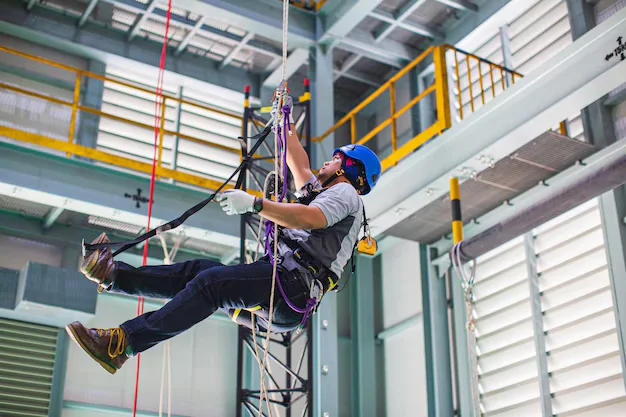Fear of heights is a common challenge for many individuals, and it can significantly impact workplace performance, especially in industries that require employees to work on elevated structures. Psychological barriers often stem from uncertainty, lack of experience, and fear of falling. These concerns can create hesitation and anxiety, leading to mistakes or slower work completion. Without proper training, employees may struggle with self-doubt, affecting their confidence in performing tasks safely. Working at heights training services addresses these psychological barriers by providing a structured learning experience where employees gradually acclimate to elevated work environments. Through hands-on training, employees become familiar with safety equipment, techniques, and emergency procedures, which helps them replace fear with knowledge. As they gain experience, they begin to trust their abilities, transforming their mindset. What once seemed impossible becomes manageable, and working at heights feels less intimidating over time.
Confidence comes from competence; structured training allows employees to build that competence in a controlled environment. Learning to navigate different heights, use harnesses correctly, and perform tasks under supervision helps employees develop a sense of control. As their knowledge expands, they become less apprehensive about potential dangers because they understand how to mitigate risks. This shift in perception enables workers to approach their jobs with greater assurance, improving efficiency and reducing hesitation. Additionally, overcoming the initial fear of heights through training has a lasting impact on job performance and personal growth. Employees who master working at heights often develop a stronger sense of self-reliance and adaptability, which benefits them in other areas of their careers and lives. By addressing fear through education and experience, working at heights training becomes a powerful tool for building confidence and transforming employees into more capable professionals.
Practical Skill Development and Its Impact on Confidence
Confidence in any profession is closely linked to the ability to perform tasks effectively and safely. When employees receive working at heights training, they acquire essential practical skills that empower them to handle their duties confidently. One of the most significant aspects of this training is learning how to properly use personal protective equipment (PPE), such as harnesses, lanyards, and anchor points. Understanding how these tools function enhances safety and reassures employees that they are well-equipped to handle their work. The training also includes techniques for maintaining balance, positioning oneself securely, and executing tasks precisely. As employees practice these skills repeatedly, they develop muscle memory and familiarity, reducing the likelihood of hesitation when working in real-world scenarios.
Hazard identification and risk assessment are other critical component of working at heights training. Employees are taught how to recognize potential dangers, assess the stability of surfaces, and determine the safest approach to completing their tasks. This level of awareness significantly contributes to confidence because it allows employees to be proactive rather than reactive. Instead of feeling overwhelmed by the unknown, they can make informed decisions and navigate challenges with a problem-solving mindset. Practical drills and simulations reinforce these skills by replicating real-life conditions in a controlled setting. As employees complete these exercises, they experience a boost in self-assurance, knowing they can handle similar situations on the job.
Furthermore, working at heights training often includes rescue procedures and emergency response strategies. Learning to handle an unexpected fall, assist a coworker in distress, or evacuate safely in an emergency adds another layer of confidence. Employees well-versed in emergency protocols feel more in control of their work environment and less vulnerable to unforeseen circumstances. This knowledge extends beyond personal safety, fostering a culture of responsibility and teamwork among employees. When workers trust in their abilities and the preparedness of their colleagues, the overall work environment becomes more secure and supportive. By equipping employees with practical skills, working at heights training instills a sense of competence that naturally translates into greater confidence on the job.
Working at heights training is a transformative process that helps employees overcome fear, develop practical skills, improve decision-making, and advance their careers. By addressing psychological barriers and providing structured learning experiences, training empowers employees with the confidence to perform their duties safely and effectively. The ability to assess risks, use safety equipment correctly, and handle emergencies ensures that workers can approach high-risk tasks with a sense of assurance rather than fear. Beyond immediate job performance, the confidence gained through training contributes to professional growth, job satisfaction, and workplace morale. Employees who feel capable and secure in their abilities are likelier to excel, take on new challenges, and contribute positively to their teams. Through structured education and hands-on experience, working at heights training instills long-term confidence that benefits employees and their organizations.







